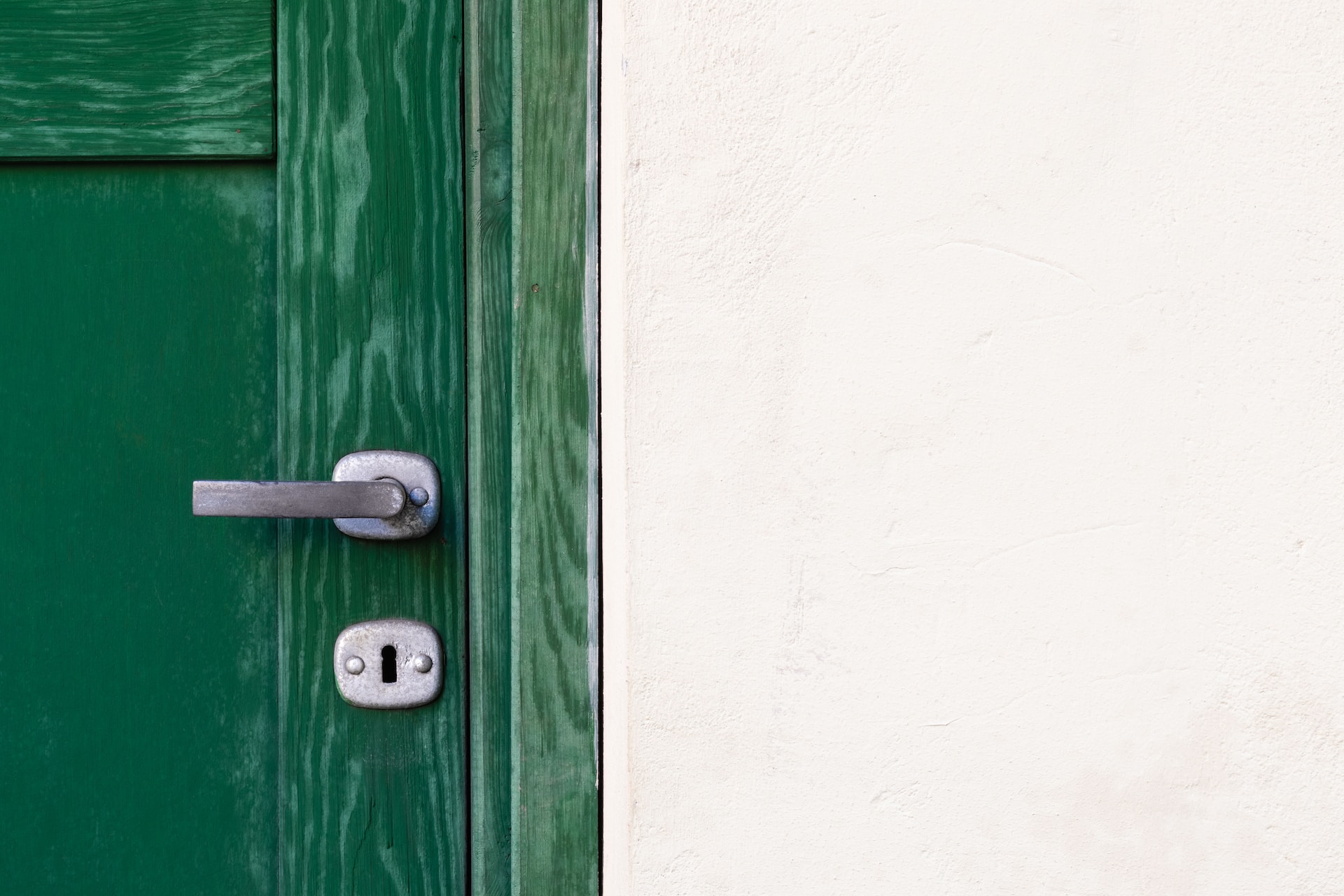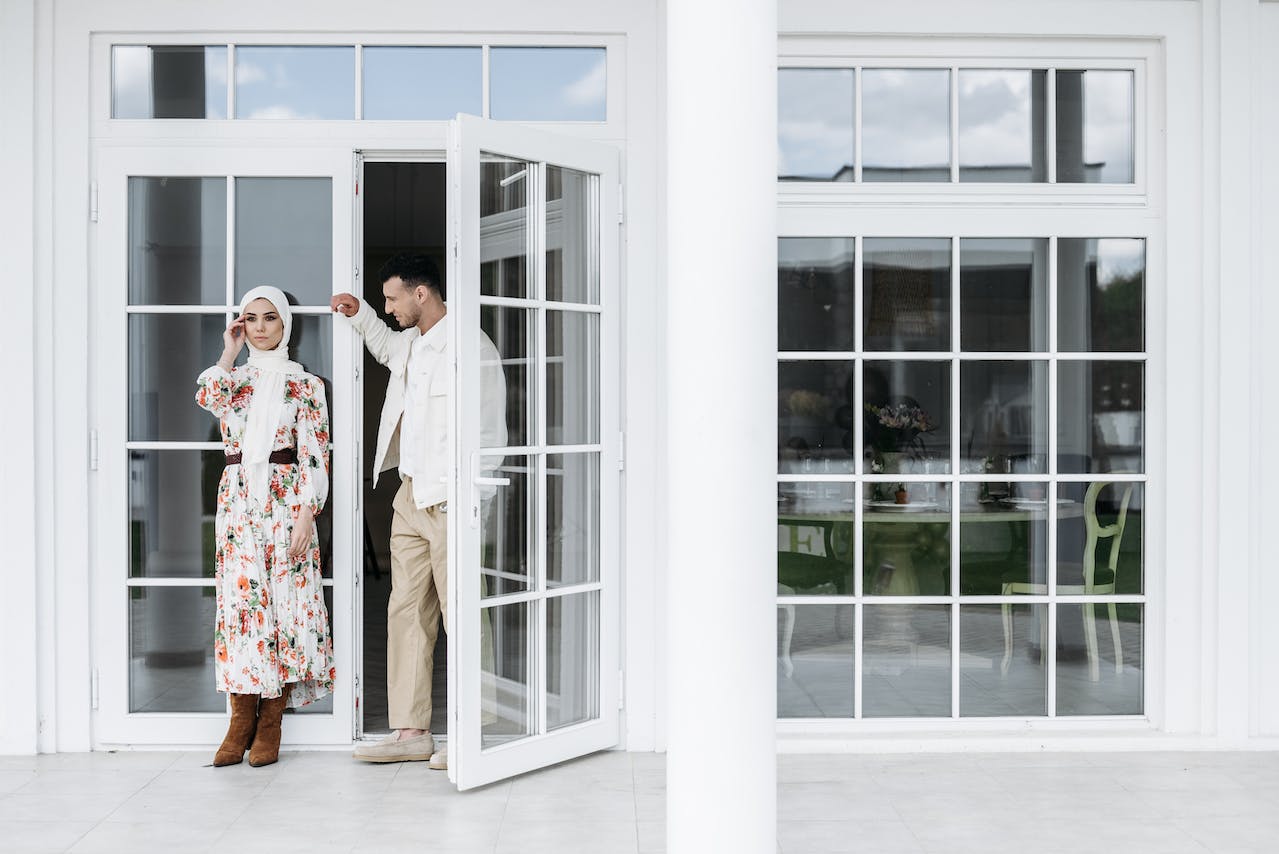8 Ways To Stop Doors From Slamming
Doors slamming shut can be an annoying and disruptive problem in your household or office space. The loud noise and the constant vibration can be bothersome, not to mention the potential damage it can cause to your doors and walls over time.
Fortunately, there are several effective ways to stop your composite and uPVC doors from slamming, ranging from simple adjustments to more advanced solutions like installing door bumpers. If your home has an issue with slamming doors, consider making these simple changes to stop them from being a nuisance.

Check the hinges
One of the primary reasons doors slam shut is due to faulty or misaligned hinges. The hinges are responsible for controlling the door's movement, and if they are worn out or improperly installed, the door can swing open or closed with excessive force.
To do a quick inspection of your doors, take a closer look at the following door parts to see if there’s an immediate cause of the door slam.
Tighten loose screws
Over time, the screws that hold the hinges in place may become loose. Use a screwdriver to tighten them, ensuring a snug fit. This simple step can make a noticeable difference in preventing slamming doors.
Lubricate the hinges
If the hinges appear rusty or squeaky, apply a lubricant like WD-40 to reduce friction. Lubricated hinges move smoothly, reducing the likelihood of a door slamming shut.
Realign the hinges
If the door doesn't sit flush with the frame, the hinges might be misaligned. Loosen the screws, adjust the hinge's position, and retighten them. This should ensure that the door closes evenly and gently.
Use door closers
Door closers are mechanical devices designed to control the speed and force with which a door closes. They are commonly used in commercial settings but can also be a valuable addition to homes.
Different types of door closers are available, including hydraulic and pneumatic options.
Select the right type
Hydraulic door closers provide a consistent closing speed, while pneumatic ones offer adjustable settings. Choose the type that suits your household needs and preferences.
Follow installation instructions
Carefully follow the manufacturer's instructions to install the door closer. This typically involves attaching it to the door and frame, adjusting the closing speed, and ensuring proper alignment.
Regular maintenance
Periodically check and lubricate the door closer to ensure smooth operation. If it becomes damaged or starts malfunctioning, consider replacing it promptly.
Locate the adjustment screw
For pneumatic door closers, they have a speed adjustment screw, which is typically located at the end of the closer opposite the hinge side.
Turn clockwise to slow down
To reduce the closing speed and prevent slamming, turn the adjustment screw clockwise. Start with small adjustments, testing the door's closing speed until you achieve the desired gentle closure.
Adjust the door closer speed
If you already have a pneumatic door closer installed but the door is still slamming, you can adjust its closing speed.
Test and repeat
Close and open the door several times to ensure it closes at the desired speed without slamming. Adjust as needed until you find the right balance.
Install a door stopper
A door stopper is a simple and effective solution to prevent doors from slamming. It acts as a buffer, absorbing the impact of a closing door and preventing it from making a loud noise.
Rubber wedge door stopper
This is a wedge-shaped stopper that you can easily place under the door. When the door closes, it comes into contact with the rubber, which absorbs the force and prevents slamming.
Magnetic door stopper
Magnetic door stoppers are attached to the door and the wall or baseboard. They hold the door open at a desired angle, preventing it from closing too forcefully.
Spring door stopper
Spring door stoppers are installed on the baseboard or wall and have a spring-loaded mechanism that absorbs the force of a closing door.
Select a door stopper that matches your door type and aesthetic preferences. Installation is usually straightforward and doesn't require professional assistance.
Use soft-close hinges
Soft-close hinges are a modern and elegant solution to prevent doors from slamming. These hinges are equipped with a hydraulic mechanism that controls the closing speed and ensures a gentle and quiet closure.
Remove existing hinges
Start by removing the old hinges from the door and frame. Use a screwdriver to loosen the screws and carefully detach the door.
Install soft-close hinges
Follow the manufacturer's instructions to install the soft-close hinges in place of the old ones. This may involve drilling new holes or adjusting the positioning.
Test the closure
Once the hinges are installed, test the door to ensure it closes smoothly and quietly. Adjust the soft-close mechanism if necessary.
Soft-close hinges are available for various types of doors, including cabinet doors and interior doors, making them a versatile option for reducing slamming.
Add weatherstripping
Weatherstripping is a practical solution to not only prevent doors from slamming but also improve energy efficiency and seal gaps around doors. It creates a cushioning effect, reducing the impact and noise when a door closes. Here's how to apply weatherstripping:
Measure and cut
Measure the sides and top of the door frame where the door makes contact. Cut the weatherstripping to the appropriate length.
Apply weatherstripping
Peel off the adhesive backing and firmly press the weatherstripping onto the door frame. Ensure it forms a snug seal when the door closes.
Test the closure
Close the door to check if it closes quietly and without slamming. Adjust the weatherstripping as needed to achieve the desired results.
Weatherstripping not only prevents slamming but also helps with insulation and soundproofing, making it a valuable addition to any door.
Install door bumpers
Door bumpers are another effective way to stop doors from slamming. They are small, cushioned devices that you can install on the door frame or wall where the door comes into contact when closing. Door bumpers absorb the impact, preventing loud slamming noises.
Choose the right location
Determine where the door contacts the frame or wall when closing. This is where you should install the door bumpers.
Clean the surface
Ensure the surface is clean and dry before attaching the door bumpers. This will help them adhere properly.
Peel and stick
Most door bumpers come with adhesive backing. Simply peel off the backing and stick them in the chosen location. Press firmly to ensure a secure attachment.
Test the closure
Close the door to verify that it closes gently and quietly with the door bumpers in place. Adjust their positioning if needed.
Door bumpers are available in various materials, including rubber, silicone, and foam, allowing you to choose the type that best suits your needs and aesthetics.
Consider soft-close sliding mechanisms
Sliding doors, such as those on closets or pocket doors, can also benefit from soft-close mechanisms. These mechanisms slow down the door's closing speed, ensuring a quiet and gentle closure. Here's how to install soft-close sliding mechanisms:
Choose the right mechanism
Select a soft-close mechanism designed for sliding doors. These typically include dampers or track-mounted systems.
Follow installation instructions
Carefully follow the manufacturer's instructions to install the soft-close mechanism on the sliding door. This may involve attaching it to the top or bottom track.
Test the closure
Slide the door open and closed to ensure it closes softly and quietly. Make any necessary adjustments to the mechanism.
Soft-close sliding mechanisms are especially beneficial in bedrooms and bathrooms, where quiet operation is essential.

Solve your slam with Flying Doors
While we don’t offer specialist equipment or add-ons to help reduce your slamming doors, our doors are made of high-quality materials that can help minimise your door slamming in the first place.
All of our composite doors come delivered in a pre-hung frame, and the closer your door fits into the frame — the less likely your door is to slam.
All of our doors are courier-delivered, with a 10-year guarantee. Browse our composite door range, or get in touch with us to find out more.